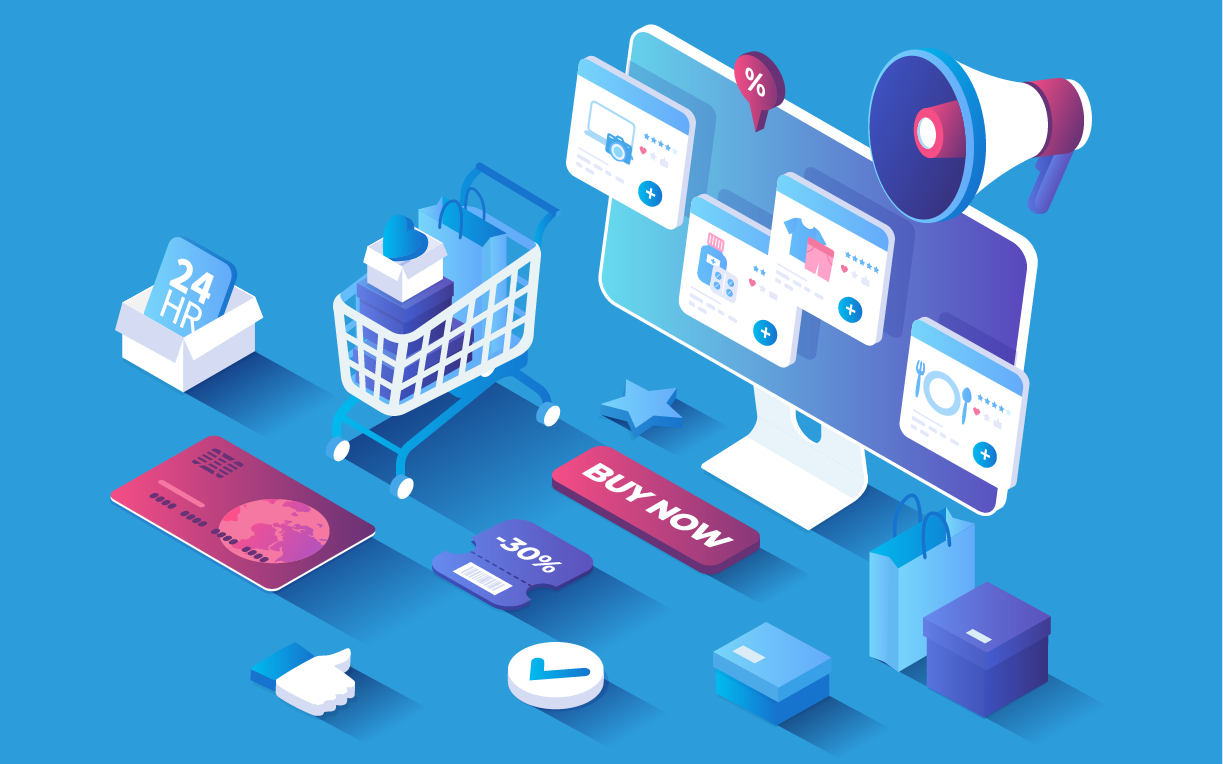
Today, analytics and data visualization are the fastest-growing areas. The early adopters of data analytics these days are e-commerce businesses. Organizations that are unable to conduct their own data analysis can use IT outsourcing consulting services to make informed business decisions.
And predictive analytics tools help companies manipulate their data (the so-called Big Data) to predict how consumers will behave in the future: what will they buy, when, and for what amount? So many questions to which it is possible to provide an element of the answer, in particular by analyzing data. And for the main question “why to use predective analytics for ecommerce” we have an answer.
Table of Contents
Why such a craze around predictive analytics?
The demand for predictive analytics tools is exploding as companies today look for ways to turn data into useful insights for their business. This may be your case. You’re accumulating customer data, but what do you actually do with it? Hiring someone to manage this quest for meaning with data is costly, and there aren’t that many specialists on the market. Only large companies can afford this approach. Entrusting this predictive analysis to an external service provider is much more suitable for the majority of companies.
How predictive analytics works
Predictive analytics is the process of using data analytics to make predictions based on data. This process uses data as well as analytical, statistical, and learning techniques to create a predictive model for predicting future events.
The term “predictive analytics” describes the application of statistical or machine learning techniques to quantitatively predict the future. Often, supervised machine learning techniques are used to predict future value or to estimate probability.
Initially, predictive analytics is tied to a business goal, whether it’s using data to reduce waste, save time, or lower costs. The process transforms heterogeneous and often massive data sets into models that can produce clear, actionable results that help achieve that goal, whether it’s reducing material waste, reducing inventory holdings, or producing products to specifications.
Reasons to adopt predictive analytics for your e-commerce site
Personalization of customer data
Personalized advertising attracts customers searching for a fulfilling buy. Big data may assist e-commerce enterprises in this situation by allowing them to identify and enlighten customers by providing tailored content based on preferences, purchase history, and current trends. Customers may be encouraged to purchase other products or items that complement what they have previously purchased. One of the primary advantages of shopping cart research is the ability to control how much money you invest. Consumers are drawn to items that have been labeled as trendy, as well as discounted items.
Personalized customer experience
The shopping experience of a consumer is essential in determining whether or not they convert. Customers nowadays have various possibilities. As a result, e-commerce enterprises should try to enhance their e-commerce experience in order to first attract and then keep consumers, resulting in increased income. In this case, data analytics may be incredibly beneficial because it aids in the discovery and interpretation of customer patterns. Data analytics may be used to track consumer behavior on a website and hence determine when they depart. It will be easier for merchants to determine what modifications are required to keep customers interested. Companies may consider using data analysis and visualization services if necessary.
With predictive analytics, you can learn a lot about your target marketing, including:
- What do customers need?
- What do customers want?
- How do customers buy?
- Where do customers look for buying advice?
And a frequent example of using this is personalized messages. People respond better to them, so a business can use predictive analytics to create a personalized experience for everyone in your target audience.
Environmental scanning
E-commerce enterprises must consider aspects such as consumer wants and preferences when determining what to market and what not to advertise. Businesses must have what customers want in order to achieve the best conversion. To get these objectives, customer behavior must be predicted. Today, a company’s e-commerce competence is judged not just by its marketing capabilities, but also by its ability to utilize analytics to forecast what its consumers will buy. Predictive analytics may also assist businesses in anticipating undesirable occurrences and improving reaction times. Large volumes of historical data are stored by data warehousing businesses so that companies may investigate intervals and trends for forecasting.
Analysis of appropriate pricing
Businesses must aim to give consumers the most recent products and services in order to increase conversions and attract new clients in order to remain competitive. Affordability is one of the most essential aspects of a customer’s buying list when it comes to e-commerce. Companies must continually compete with one another to provide the highest comparable value through their pricing strategy. Without data analysis, it is hard to continually adjust the prices of hundreds of goods, resulting in consumer loss to competitors. Most IT consulting, and outsourcing firms provide data visualization services that enable businesses to swiftly ingest massive volumes of information. Retailers can use e-commerce data analytics to determine the best sales strategy, such as whether to offer promotional rewards and whether to price items higher or lower.
Effective supply chain management
E-commerce companies must manage a complicated supply chain. They oversee a variety of merchants, wholesalers, warehouses, and other firms and must manage deliveries, reservations, refunds, swaps, and other obligations smoothly. A firm will not be able to prosper in the long run unless it has good supply chain management. Companies are increasingly using analytics to assess and improve their supply chain operations. Compared to prior methods, e-commerce data analysis gives a considerably more reliable and competitive management system.
If you feel the need to outsource data visualization consulting services or data storage services, be sure to turn to top IT outsourcing companies such as INOXOFT. Do your research, determine your goals and budget, and then close the deal. As big data analytics becomes available and more online companies adopt it, it will soon become a requirement for all e-commerce businesses.
RELATED ARTICLES
Latest Articles
 Creating Dynamic Content Calendars Within a Headless CMSIn TipsMarch 27, 2025When you’re syndicating content for different […]
Creating Dynamic Content Calendars Within a Headless CMSIn TipsMarch 27, 2025When you’re syndicating content for different […] Florida’s Harsh Sun & Your Car: How to Prevent Paint Damage with PPFIn AutomotiveMarch 27, 2025Florida is known for its year-round sunshine, but that […]
Florida’s Harsh Sun & Your Car: How to Prevent Paint Damage with PPFIn AutomotiveMarch 27, 2025Florida is known for its year-round sunshine, but that […] 5 Cool Apps You Probably Didn’t Know AboutIn AppMarch 19, 2025We’ve all heard of mainstream apps such as Facebook, […]
5 Cool Apps You Probably Didn’t Know AboutIn AppMarch 19, 2025We’ve all heard of mainstream apps such as Facebook, […] Top 5 Most Downloaded Apps in the App Store in 2024In TipsMarch 13, 2025The App Store continues to be a hotspot for new and […]
Top 5 Most Downloaded Apps in the App Store in 2024In TipsMarch 13, 2025The App Store continues to be a hotspot for new and […] Top 5 Digital PR and Link-Building Agencies in 2025 for SEO GrowthIn TechnologyMarch 10, 2025In 2025, digital PR and quality backlinks will be […]
Top 5 Digital PR and Link-Building Agencies in 2025 for SEO GrowthIn TechnologyMarch 10, 2025In 2025, digital PR and quality backlinks will be […] How Long To Soak Chia Seeds: A Simple GuideIn TipsFebruary 11, 2025Chia seeds are little round black seeds that have […]
How Long To Soak Chia Seeds: A Simple GuideIn TipsFebruary 11, 2025Chia seeds are little round black seeds that have […] How to Spot Fake Software Licenses and Avoid ScamsIn TechnologyFebruary 4, 2025Image Credit: pexels.com In today’s complex […]
How to Spot Fake Software Licenses and Avoid ScamsIn TechnologyFebruary 4, 2025Image Credit: pexels.com In today’s complex […] What Factors Should Businesses Consider When Choosing A SIP Trunk Provider?In TechnologyFebruary 1, 2025Under the conditions that are related to running a […]
What Factors Should Businesses Consider When Choosing A SIP Trunk Provider?In TechnologyFebruary 1, 2025Under the conditions that are related to running a […] Best ATV Rentals in Dubai for Unforgettable Desert SafarisIn TravelJanuary 29, 2025Image Credit: pexels.com Dubai is a city that offers […]
Best ATV Rentals in Dubai for Unforgettable Desert SafarisIn TravelJanuary 29, 2025Image Credit: pexels.com Dubai is a city that offers […] The Evolution of Paint Protection Film: Innovations You Need to KnowIn TechnologyJanuary 26, 2025Over the years, Paint Protection Film (PPF) has […]
The Evolution of Paint Protection Film: Innovations You Need to KnowIn TechnologyJanuary 26, 2025Over the years, Paint Protection Film (PPF) has […] Your Ultimate Guide to Local SEOIn MarketingJanuary 17, 2025Local SEO can be defined as optimization of the online […]
Your Ultimate Guide to Local SEOIn MarketingJanuary 17, 2025Local SEO can be defined as optimization of the online […] Top 5 Reasons Why the Organic Traffic Is Really Beneficial for BusinessesIn MarketingJanuary 16, 2025Many companies invest heavily in SEO, with the […]
Top 5 Reasons Why the Organic Traffic Is Really Beneficial for BusinessesIn MarketingJanuary 16, 2025Many companies invest heavily in SEO, with the […]
stopie.com is a participant in the Amazon Services LLC Associates Program, an affiliate advertising program designed to provide a means for sites to earn advertising fees by advertising and linking to Amazon.com.
Clicking on an Amazon link from stopie.com does not increase the cost of any item you purchase.
We will only ever link to Amazon products that we think our visitors may be interested in and appreciate learning more about.



